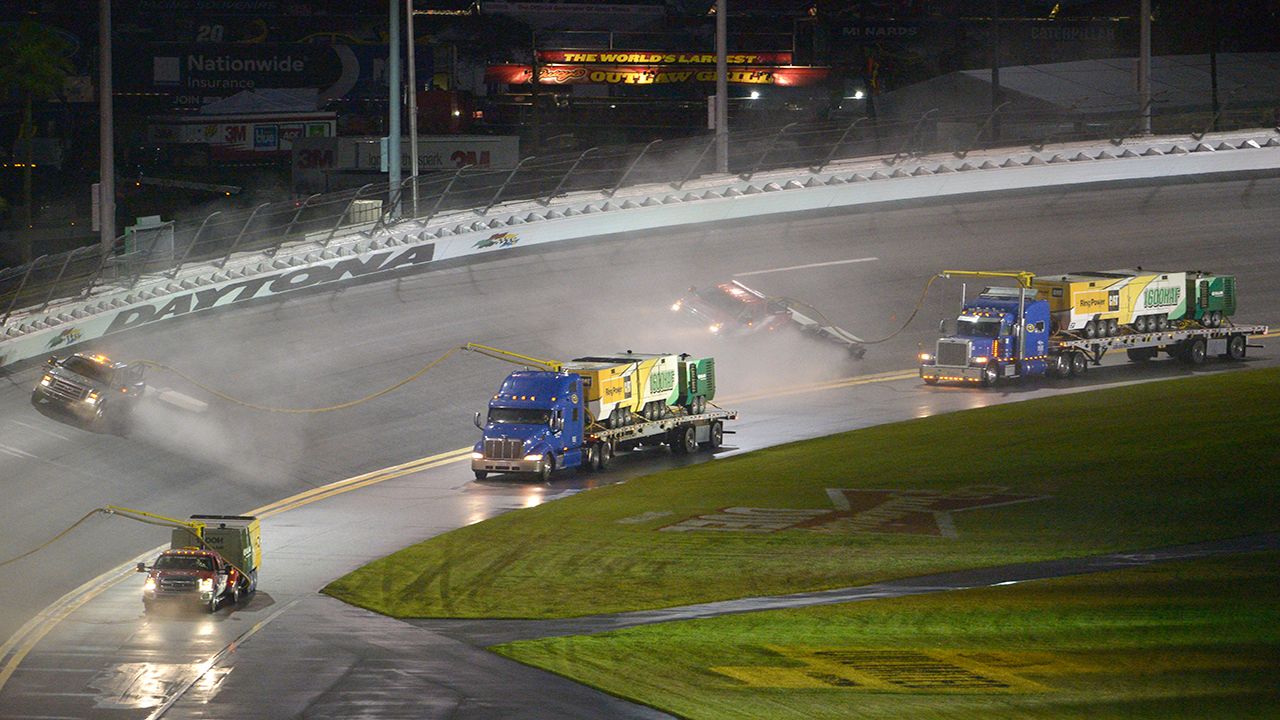Despite February being part of Central Florida’s dry season, it seems like rain threatens the Daytona 500 each year. We made it through the 2022 race rain-free and, hopefully, that will be the case this year, as well!
While the chance for showers is low this year, that’s definitely not always been the case over the past sixty-four years. Rain, storms and temperature extremes play a big role in the 500-mile race each year.
Daytona Beach typically sees high temperatures in the low 70s in February. There are times, however, that these numbers can climb much higher. The warmest Daytona 500 on record occurred back in 1975, with the temperature reaching 85 degrees.
Even though this is far from the hottest temperatures Central Florida sees, it can still cause quite a few problems for drivers.
Race cars do not come with air conditioning, so the inside of the car can be anywhere between 30-40 degrees warmer than the air temperature. This can lead to dehydration and cramping during the several hours drivers are racing.
While 1975 holds the official record, there are seven other years when temperatures reached the 80s for the Daytona 500. The most recent was in 2021, with a high at the start of the race at 82 degrees.
Temperatures can fluctuate during February in Central Florida. We’ve already discussed how much warmer they can climb, but what about when the temperatures drop?
The coldest running of the Daytona 500 occurred on Feb. 26, 1967, when temperatures only reached 48 degrees.
The cold doesn’t affect the driver inside the car as much as the heat, but it can affect how the car performs on the track. It’s also shocking for fans attending the race since it’s rarely Florida’s highs don’t make it out of the 40s!
No other Daytona 500 held temperatures in the 40s, but there were eight races with highs only in the 50s..

One of the most memorable races occurred in 2014 when rain and storms rocked the Daytona 500. After only 38 of the 200 laps, rain fell, and they delayed the race.
Soon after the rain started, storms moved in. The first of two Tornado Warnings for Volusia County, which includes the Daytona International Speedway, was issued at 2:30 p.m. Staff evacuated the grandstands, and fans took shelter beneath them.
This warning lasted for about an hour, but another tornado-warned storm moved in soon after. It wasn’t until around 5 p.m. that the storms moved out, and the Daytona 500 resumed. Luckily, no tornado touched down that day.
It was the wettest race day with 0.98 inches of rain in Daytona Beach. We came close to this record in 2021 when 0.95 inches of rain fell and delayed the race almost six hours and into the early morning hours the next day. Twenty-six other Daytona 500 races have seen at least a trace of rain, and out of those 26, six of those times received over half an inch.
Another recent notable Daytona 500 that had to deal with heavy rain was Feb. 16, 2020. Not only did steady rain delay the race, but it was only the second time in history that they had to reschedule the Daytona 500. The first rescheduled race was back in 2012.
Temperatures for the 65th running of the Daytona 500 look comfortable in the mid-70s. An onshore wind, however, may bring a few showers inland and there’s a slight chance for a few showers. The chance is low, so hopefully we see the second year in a row without weather delays!
Our team of meteorologists dives deep into the science of weather and breaks down timely weather data and information. To view more weather and climate stories, check out our weather blogs section.




